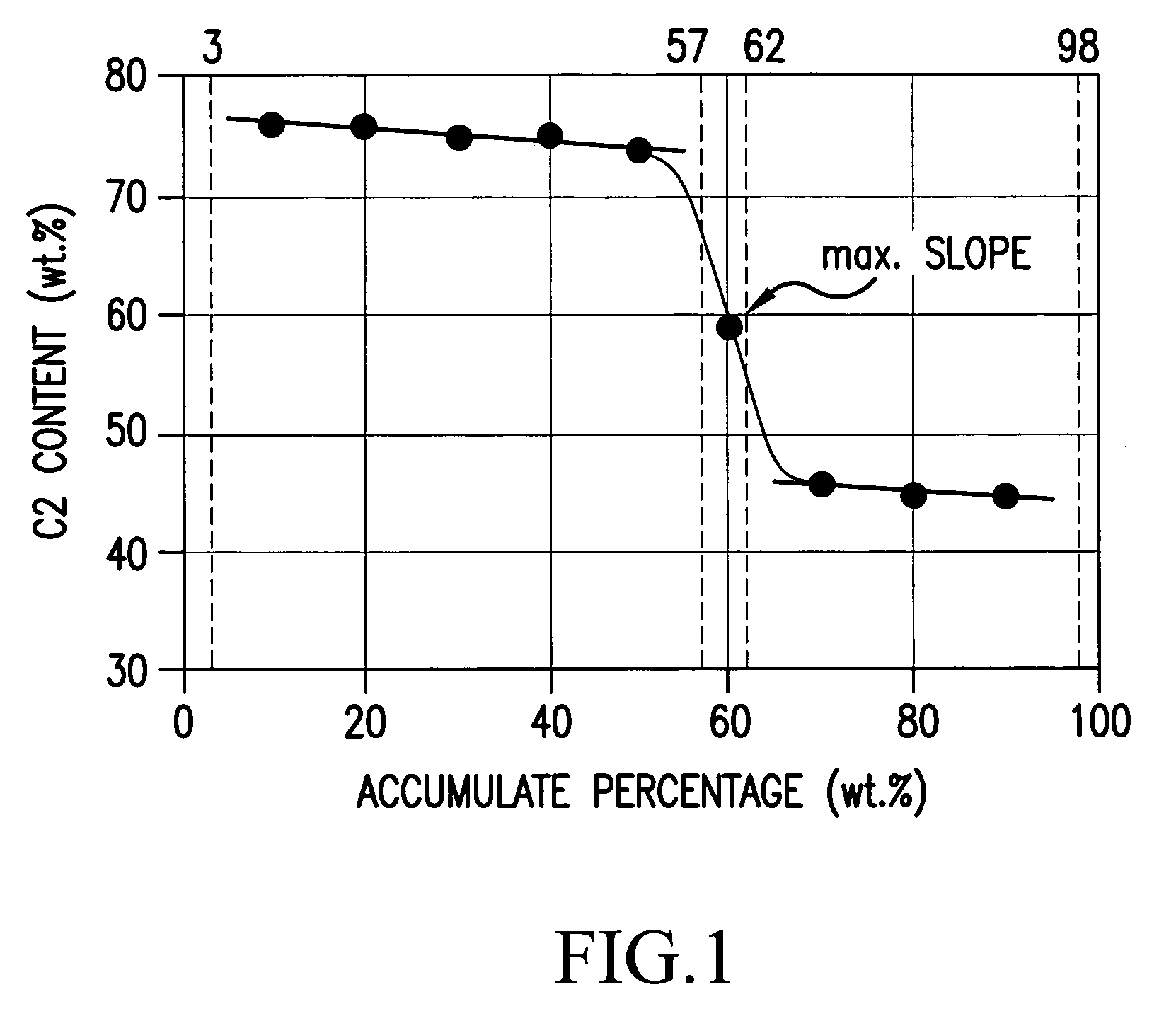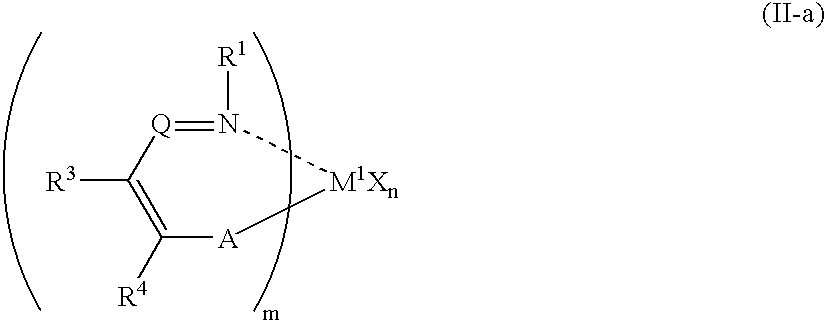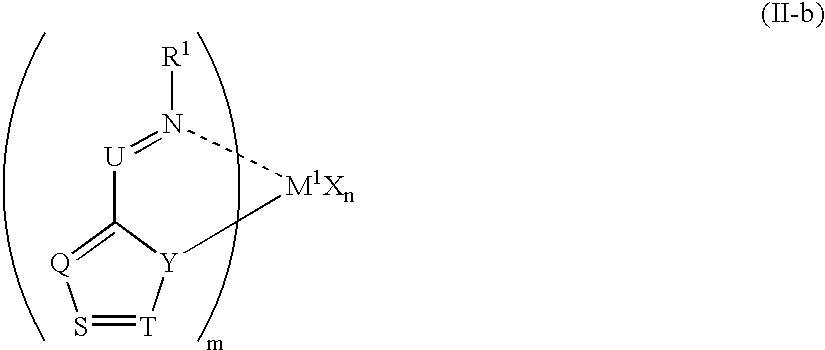Olefin block copolymer, viscosity index improver for lubricating oils and lubricating oil composition
a technology of olefin block and copolymer, which is applied in the field of new products, can solve the problems of poor economic efficiency, insufficient ability to improve low temperature properties of lubricating oil, and insufficient properties of lubricating oil, and achieve excellent balance between viscosity and shear stability, excellent low temperature properties, and excellent viscosity index
- Summary
- Abstract
- Description
- Claims
- Application Information
AI Technical Summary
Benefits of technology
Problems solved by technology
Method used
Image
Examples
example 2
Polymerization Example 2
[0203]To a 500 ml glass autoclave thoroughly purged with nitrogen, 250 ml of dried toluene was fed and propylene was passed through at a rate of 100 l / h for 40 min. Thereafter while the temperature of the autoclave was kept at 25° C., 5.00 mmol in terms of aluminum of methyl aluminoxane was added to the autoclave. Successively, 0.05 mmol of bis[N-(3-t-butyl salicylidene)-2,3,4,5,6-penta-fluoroanilinato]titanium(IV) dichloride was added as a catalyst, and simultaneously a mixed gas of ethylene and propylene at a rate of 3 1 / 80 l per hour was passed through and the stirring was conducted for 50 min. The procedure to this point was carried out in the same manner as in Polymerization Example 1 and then the mixed gas composition was changed to 70 1 / 30 l per hour and the stirring was further conducted for 3.5 min without stopping of the reaction. After the stirring, the reaction was stopped by adding 20 ml of isobutyl alcohol. To the reaction mixture, 10 ml of 1 N ...
example 1
[0205]A lubricating oil was prepared using 87.62% by weight of mineral oil 150 neutral (manufactured by ESSO Co.) as base oil, 0.88% by weight of a polymer prepared in Polymerization Example 2 as a viscosity index improver, 0.5% by weight of ACLUB 133 (manufactured by Sanyo Chemical Industries) as a pour point depressing agent and 11.0% by weight of a detergent and dispersant (manufactured by Lubrizol Co.), and then the properties of the lubricating oil and the fluidity at low temperatures thereof were evaluated.
[0206]The results are shown in Table 2.
[0207]
TABLE 2Example 1PolymerizationPolymer for blendingExample 2Blending (wt %)Base oil87.62Detergent and dispersant11.0Pour point depressing agent0.5Polymer0.88Lubricating oil propertiesKinematic viscosity at 100° C. (mm2 / s)14.88SSI28CCS viscosity at −20° C. (mPa · s) 3,350MR viscosity at −30° C. (mPa · s)35,500Low temperature fluidityAA
Polymerization Examples 3 and 4
[0208]Polymers were prepared by polymerization in such manners as de...
PUM
| Property | Measurement | Unit |
|---|---|---|
| molar ratio | aaaaa | aaaaa |
| molecular weight distribution | aaaaa | aaaaa |
| temperature | aaaaa | aaaaa |
Abstract
Description
Claims
Application Information
 Login to View More
Login to View More - R&D
- Intellectual Property
- Life Sciences
- Materials
- Tech Scout
- Unparalleled Data Quality
- Higher Quality Content
- 60% Fewer Hallucinations
Browse by: Latest US Patents, China's latest patents, Technical Efficacy Thesaurus, Application Domain, Technology Topic, Popular Technical Reports.
© 2025 PatSnap. All rights reserved.Legal|Privacy policy|Modern Slavery Act Transparency Statement|Sitemap|About US| Contact US: help@patsnap.com



